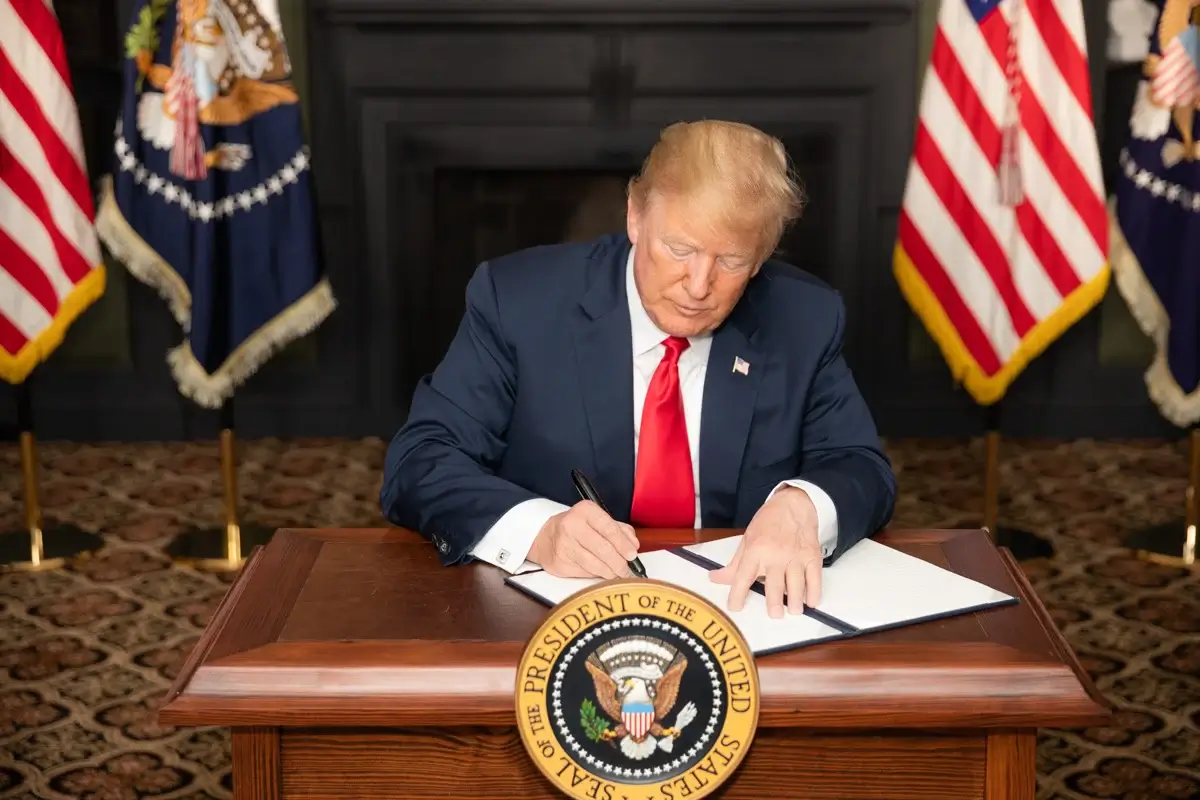United States President Donald Trump announced late Monday evening that a ceasefire agreement between Israel and Iran had been reached, aiming to bring an end to nearly two weeks of intense hostilities that had threatened to engulf the Middle East in a wider war. The declaration, made via his social media platform, stated, “THE CEASEFIRE IS NOW IN EFFECT. PLEASE DO NOT VIOLATE IT!”
The announcement came after a tense period marked by mutual missile strikes, including Iranian attacks that killed several Israelis just hours before the ceasefire was set to begin. Trump’s statement followed a series of high-level diplomatic efforts, including direct talks with Israeli Prime Minister Benjamin Netanyahu and indirect negotiations with Iranian officials, reportedly facilitated by Qatar.
According to sources, the ceasefire was structured to allow both sides to complete ongoing military operations before fully halting hostilities, with Iran expected to start the ceasefire at midnight Eastern Time, followed by Israel twelve hours later.
Despite Trump’s confident declaration, immediate official confirmation from either the Israeli or Iranian governments was not forthcoming. Israeli authorities later stated that they had agreed to the ceasefire after achieving what they described as “tremendous success” in their operations against Iran, claiming to have neutralised key nuclear and military threats. Iran, for its part, indicated a willingness to reciprocate de-escalation but stopped short of confirming a formal truce, with Foreign Minister Abbas Araghchi stating there was “only Iran’s readiness to reciprocate de-escalation”.
The backdrop to this ceasefire was a rapid escalation in violence. The United States had launched strikes on Iranian nuclear facilities over the weekend, prompting Iran to retaliate with missile attacks on both Israel and a U.S. military base in Qatar. While the U.S. reported no casualties from the Iranian strike on its base, Israel suffered fatalities in missile barrages that continued up until the ceasefire took effect.
Involvement of Qatar Government
Diplomatic sources revealed that the ceasefire deal was brokered with significant involvement from the Qatari government, which acted as a mediator between Washington and Tehran. President Trump personally thanked Qatar’s Emir for his role in the negotiations, and U.S. officials credited recent American strikes on Iranian nuclear sites as a decisive factor in bringing Iran to the negotiating table.
On the ground, the situation remained tense even as the ceasefire was announced. Air defence systems in both Iran and Israel stayed on high alert, and residents in affected areas were advised to remain in shelters. Israeli emergency services confirmed several deaths from the final rounds of Iranian missile fire, and Israeli military sources reported that their forces had achieved aerial dominance over Tehran during the conflict.
While Trump and his administration hailed the ceasefire as a major diplomatic victory, analysts and observers cautioned that significant questions remain about the durability of the truce and the underlying issues that fuel the rivalry between Israel and Iran. The lack of immediate, public confirmation from Tehran and Jerusalem, as well as ongoing tensions in the region, have left many wondering whether this ceasefire will hold or if it is merely a temporary pause in a long-running conflict.
For now, the world watches closely as both nations weigh their next steps, with hopes that the ceasefire will mark the beginning of a more stable and peaceful chapter in the region’s troubled history.


